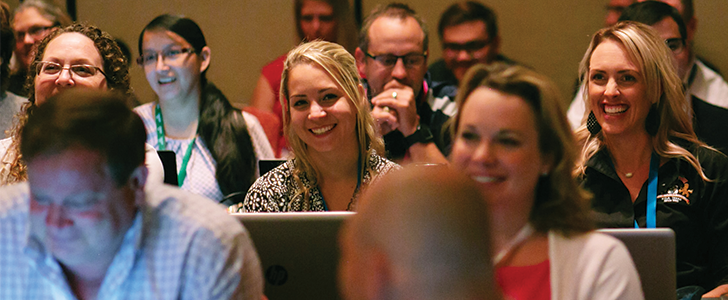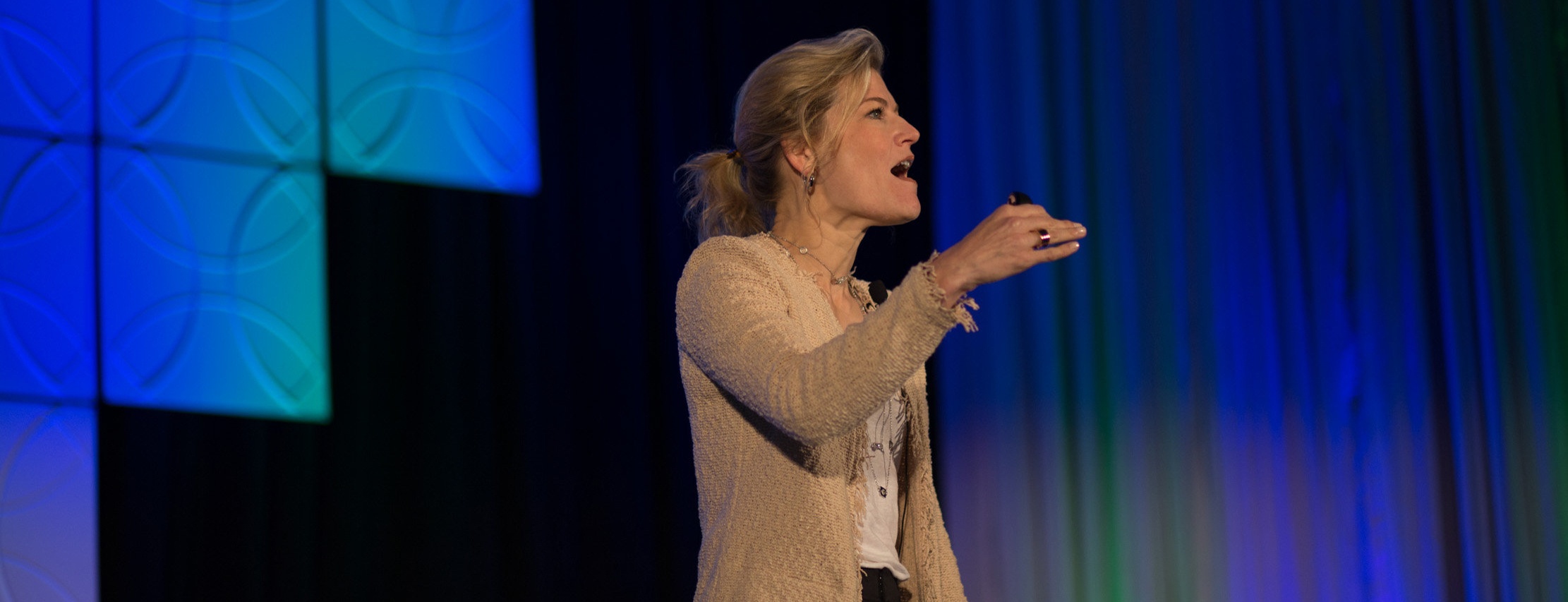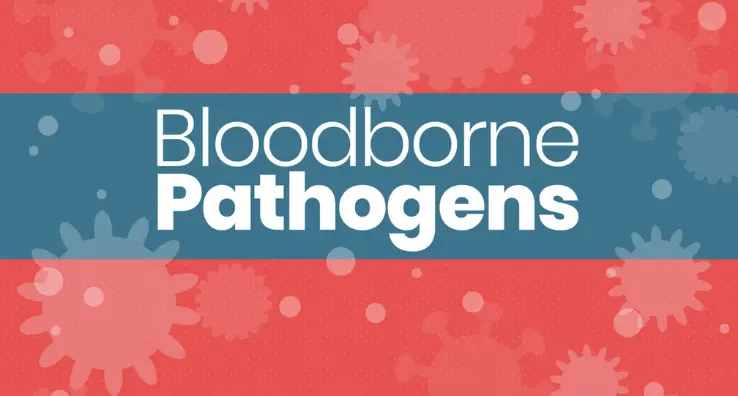Top Ten Takeaways from Alchemy Engage 2017

We had such good time this year at our Alchemy Engage conference! For three days, over 400 food manufacturing professionals and leaders met at the Hyatt Regency in sunny Austin, Texas, to talk about engaging workers to achieve company safety quality, and productivity goals. CEO Jeff Eastman kicked off Engage with our three big conference goals: to share best practices, network with peers, and learn new technologies.
Here are some key takeaways from the breakout sessions and panels:
The pressure to produce is still high.
Time on the floor is money, and in manufacturing, every minute counts. This means less time can be taken for training. Safety teams must maximize their time. Short learning bursts in small groups are an effective way to get more bang for your buck. Incorporating other types of learning tools also work, like digital signage, coordinated huddles, and eye-catching posters that reinforce safety topics—while reducing traditional classroom time.
Safety Communities are more effective than Safety Departments.
Some companies have safety departments, i.e. The People Who Care About Safety. Other companies have safety communities where every employee understands and takes responsibility for safety. We learned that changing from a compliance approach to a behavior approach holds workers accountable—to each other and themselves.
People hate to be told… but they love to be asked.
Leadership expert AmyK reminded us this truism about human nature. What does this have to do with food manufacturing? Simple — your frontline employees want to feel like they matter. Getting their input and allowing them to take ownership of safety helps them feel valued. The less they feel like a commodity, the more they will want to keep their jobs—which is incentive for better performance.

Data is more prolific and personalized.
These days data is meant to share and compare. With tech tools and wearables taking off, accumulating personal data points is the new norm. Why not in safety training, too? With more sophisticated means of capturing data, what we do with that data will separate the smart manufacturing companies from the ones still stuck in old school ways of thinking. A learning program that captures data so it’s easy to retrieve and ready for audits will provide a key advantage in staying compliant amid evolving regulations.
Customize your content to make an impact.
Several companies, including Tyson Foods, Maple Leaf Foods, and Dawn Foods, shared how they customize their training content so that it’s more meaningful to frontline workers. Some interesting things we learned were that when employees see themselves featured, they’re more likely to pay attention. Companies that used frontline workers in images, video, and voiceovers got a higher level of engagement—which meant safety issues stuck. Another cool takeaway? When employees feel engaged, they often take initiative. One worker shot his own video to demonstrate a skill that later became an official part of training.
Truly engaging training is a series of learning moments.
Creating a culture of safety means going beyond the onboarding “firehose” style of training and toward a more continuous frame of mind regarding safety. This means keeping topics learned top of mind through a variety of ways: interactive learning bursts, group huddles, digital signage, eye-catching posters, and even one-on-one coaching to reinforce important messaging. Reinforcement leads to retention. which leads to confidence to take smart actions.
One way to reinforce is to recognize.
People like rewards. This isn’t revolutionary, but it’s worth a reminder. Just as executives like to chase the quarterly bonus, frontline workers work harder when they know they might get recognized. Whether it’s giving out prizes for lightning rounds at the end of interactive trainings (one favorite mentioned was Starbucks cards), or creating special “badges of honor” for workers who demonstrate outstanding safety skills, showing your team you care is one way to create value—on and off the floor.
Being light on your feet can lead to success.
The Smartleese comedy team reminded us how improv skills can be a professional’s sharpest tool. With fun games like throwing imaginary balls, which turned into sleeping babies and then dirty tissues, they led us through some fun exercises that reminded us how important listening is to effective communication. We learned that staying flexible and thinking on our feet can make us more adaptable and successful in our professional careers.
It’s okay to have fun…seriously.
Safety is a serious topic, but a little levity never hurts. In fact, it can even drive important messages. Funny Photoshopping or encouraging healthy competition during lightning rounds can build rapport, reinforce safety topics, and make employees feel valued by giving them time off the floor to really understand safety topics. After all, training is not just lip service — it’s meant to keep them safe.
The Internet has changed how we educate.
The internet has changed how we get our information — we want to access information quickly and easily, which has led to shorter attention. This is making it more difficult to store important information in long term memory. This is especially true for Millennials, digital natives who don’t respond well to traditional methods of learning. Our need for speed has in turn affected how educators share information. A more interactive approach that makes learning continuous goes a long way toward engaging employees and creating a safety program that works.
This was just a snapshot of what we learned at Engage, all while eating delicious snacks made by our amazing clients, of course. Join us next year at the same time and place—September 18-20, 2018 at Austin’s Hyatt Regency—for three more days to share, network and learn.
See you then!





